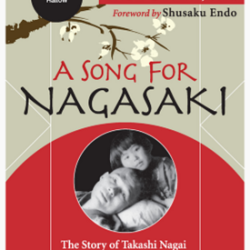Our friends at Religion News Service have an excellent profile of two of the best books ever written on World War I and religion, Jonathan Ebel’s Faith in the Fight: The American Soldier and the Great War, and my colleague and fellow Anxious Bencher Philip Jenkins’ The Great and Holy War: How World War I Became a Religious Crusade. RNS’s Kimberly Winston:
Several countries — especially Russia and Germany — saw the war as a fulfillment of their unique destinies as the kingdom of God. But Europe did not have room for so many countries with the same aspiration.
“You can toss a coin as to which country to blame, but their two clashing visions made war inevitable,” Jenkins said. “If you do not understand the messianic and apocalyptic imagery used by all sides, and how wide-ranging those images were among all classes, all groups, all nations, you cannot hope to understand the war.”
Jenkins gathers numerous examples of biblical images of angels, demons, apocalypse and righteousness and shows how both sides in the war used them to justify the fight and rally support at home. It is no wonder, he writes, that the war was frequently referred to as “apocalyptic,” or even as Armageddon, the final battle the New Testament says will restore a heavenly kingdom.
“I could almost rewrite my book in terms of angels,” he said, citing one of the most frequently used — and believed in — images of the war. The most famous example are the so-called “Angel of Mons” — ghost soldiers from the 15th-century Battle of Agincourt led by St. George who supposedly appeared on the the British lines in France.
There has been major historical interest in the past fifteen years – especially since the 9/11 terrorist attacks and the Iraq War – about the connection between religion and violence. Christians are often quick to point to Islam as the main culprit here, and there’s no denying that in modern times, Islam has a uniquely problematic relationship between jihadism and violence. But of course, Christianity also has a long history of violence that stands alongside its traditions of restraint, “just war,” and pacifism.
I have been struggling with the connection between Christianity and violence in Colonial America, too, as I am writing my narrative account of Early American history for Yale University Press. Spain, France, and Britain all saw their expansion into the New World in religious terms, as well as their wars with those other European powers and with Native American groups.
There are several explanations for the strong connection between religion and violence in Christian history. One is that whether people are entirely sincere or cynical about them, spiritual justifications for war offer more compelling, transcendent reasons than worldly justifications related to power.
Another factor is that the counsel of Scripture on war is sufficiently mixed for people to justify religious war. Yes, the teachings of Christ and images of God’s millennial reign would recommend peace, but the history of Old Testament Israel, and scenes in Revelation, highlight themes of war.
Finally, the relationship between the Judeo-Christian tradition and war speaks to the depth of that spiritual heritage of the west. If Christianity, including its Jewish roots, were not so pervasively influential in European and American culture, then applying its themes to war would make no sense.
Friends, you can sign up here for my Thomas S. Kidd author newsletter. Each newsletter will update you on what’s happening in the world of American, a religious and political history, and current events. It will contain unique material available only to subscribers, and each will help you keep up with my blog posts, books, and other writings from around the web. [Your e-mail information will never be shared.] Thanks!












